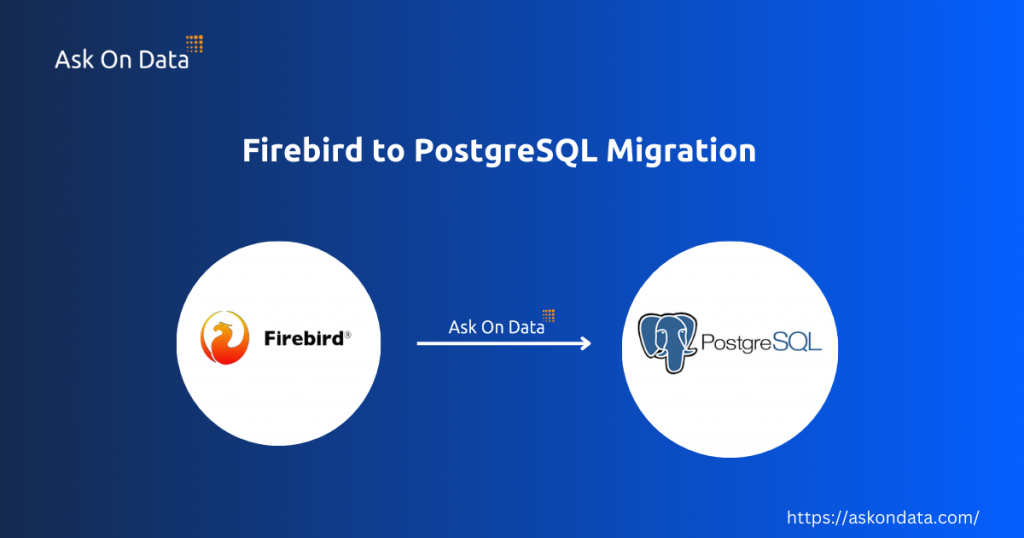
In this article, we dive deep into the process of migrating from Firebird to PostgreSQL, exploring the key steps and considerations to ensure a seamless transition. We cover essential topics such as data compatibility, schema conversion, and handling differences in SQL syntax between the two databases. With a focus on best practices and tools that streamline the migration process, this guide will help organizations move their data efficiently while minimizing downtime. Additionally, we discuss common challenges and provide solutions to overcome them, ensuring a smooth and successful migration experience.
What is Firebird
Firebird is an open-source relational database management system (RDBMS) known for its lightweight architecture, high performance, and scalability. It supports SQL, transactions, and multi-version concurrency control (MVCC), making it ideal for embedded applications and small to medium-sized projects. Firebird is compatible with a variety of platforms, including Windows, Linux, and macOS. Its flexibility allows developers to create efficient, low-cost solutions without sacrificing reliability or speed. Despite its smaller footprint compared to larger databases, Firebird offers powerful features, such as stored procedures and triggers, making it a versatile choice for many use cases.
What is PostgreSQL
PostgreSQL is an advanced, open-source relational database management system (RDBMS) known for its robustness, flexibility, and support for complex queries. Widely admired for its strong adherence to SQL standards, PostgreSQL goes beyond basic functionality, offering powerful features like multi-version concurrency control (MVCC), extensibility, and support for unstructured data types. It’s a go-to choice for developers and organizations handling large-scale, high-performance applications. Whether you’re building a web app, managing big data, or running analytics workloads, PostgreSQL is a trusted platform for its reliability, security, and active community of contributors, making it a leader in the world of open-source databases.
Advantages of Firebird to PostgreSQL Migration
- Improved Performance: PostgreSQL offers better performance with support for larger datasets and complex queries.
- Advanced Features: PostgreSQL provides advanced features like JSONB support, full-text search, and foreign data wrappers.
- Scalability: PostgreSQL scales efficiently to handle high traffic applications and large volumes of data.
- Stronger Security: PostgreSQL has robust security mechanisms, including encryption and fine-grained access control.
- Active Community Support: PostgreSQL has a large, active community that ensures regular updates and bug fixes.
- Cross-Platform Compatibility: PostgreSQL supports a wide range of operating systems, including Windows, Linux, and macOS.
- SQL Compliance: PostgreSQL adheres strictly to SQL standards, reducing potential issues during migration.
- Extensibility: With support for custom extensions, PostgreSQL allows businesses to tailor the database to their specific needs.
- Better Documentation: PostgreSQL provides extensive, well-organized documentation, easing development and troubleshooting.
Method 1: Migrating Data from Firebird to PostgreSQL Using the Manual Method
- Schema Analysis and Preparation: Analyze the Firebird schema, identifying tables, views, and stored procedures to be migrated, and prepare a corresponding schema in PostgreSQL.
- Data Export: Use Firebird’s gbak utility or export data to CSV files for easy import into PostgreSQL.
- Schema Creation in PostgreSQL: Manually create the PostgreSQL schema, mapping tables, data types, and relationships from Firebird to PostgreSQL.
- Data Import: Use PostgreSQL’s COPY command or pgAdmin to import the data from the exported CSV files.
- Stored Procedures and Application Updates: Convert Firebird-specific stored procedures to PostgreSQL’s PL/pgSQL, and update applications to connect to the new PostgreSQL database.
- Testing and Optimization: Test the migration thoroughly, ensuring data integrity and application functionality, then optimize performance for PostgreSQL.
Disadvantages of Migrating Data from Firebird to PostgreSQL Using the Manual Method
- High Error Risk: Manual migration increases the likelihood of human errors, affecting data integrity and process accuracy.
- Complex Data Transformation: Achieving complex data transformations without automation can lead to inconsistencies and errors.
- Dependency on Technical Resources: Skilled resources are essential, making the process time-consuming and costly.
- Lack of Automation: The entire process requires manual effort, from data extraction to schema conversion, which is inefficient.
- Limited Scalability: Manual methods become increasingly difficult to scale as data volume and complexity grow.
- No Automated Error Handling or Notifications: Without automation, errors go undetected, causing potential delays or data loss.
- No Automated Rollback Mechanism: In the event of a failure, there’s no automatic rollback, complicating recovery and increasing downtime.
- Lack of Monitoring Tools: Without automated logs, tracking data transfer progress and ensuring completeness is challenging.
- Inability to Handle Incremental Loads: Manual migration lacks automated methods for incremental data loading, complicating ongoing synchronization.
Method 2: Migrating Data from Firebird to PostgreSQL Using ETL Tools
There are certain advantages in case if you use an ETL tool to migrate the data
- Automation of Data Migration: ETL tools automate the entire migration process, reducing human error and saving time.
- Simplified Schema Mapping: Built-in connectors and functions handle schema differences between Firebird and PostgreSQL seamlessly.
- Incremental Data Loads: ETL tools allow for scheduled data loads and incremental updates to keep migration continuous and up-to-date.
- Real-Time Monitoring: ETL tools provide dashboards to track progress and alert users to any migration issues.
- Scalability: ETL tools scale easily to handle large data volumes, ensuring consistent performance without manual intervention.
- Inbuilt Error Handling and Notifications: These tools include automated error handling, logging, and email notifications for efficient issue resolution.
- Comprehensive Monitoring and Analytics: ETL tools monitor key stats like data transfer volumes, data quality (DQ), and change data capture (CDC).
- Need to do this activity again and again for every table.
Challenges of Using ETL Tools for Data Migration
- Complex Setup: ETL tools require intricate configuration, making the initial setup time-consuming and technically demanding.
- Data Transformation Issues: Handling complex data transformations and schema differences can be difficult and often requires custom scripting.
- Performance Limitations: ETL tools may struggle with large datasets or high-velocity data streams, leading to slower performance.
- Cost Considerations: Many ETL tools come with high licensing costs, which can strain budgets, especially for smaller organizations.
- Dependency on Third-Party Tools: ETL tools often depend on external services, creating risks around compatibility and vendor support during migration.
Why Ask On Data is the Best Tool for Migrating Data from Firebird to Oracle
- User-Friendly Interface: Ask On Data offers an intuitive interface that simplifies the migration process, making it easy for users of all skill levels.
- Seamless Integration: The tool connects smoothly with both Firebird and Oracle, ensuring a hassle-free data transfer without complicated setups.
- Automated Data Transformation: It automatically transforms and cleans your data, reducing the risk of errors and saving you time during migration.
- Real-Time Monitoring: Ask On Data provides real-time monitoring of the migration process, allowing you to track progress and quickly address any issues.
- Cost-Effective Solution: With a flexible pricing model, Ask On Data helps you manage migration costs without sacrificing quality or performance.
Usage of Ask On Data : A chat based AI powered Data Engineering Tool
Ask On Data is world’s first chat based AI powered data engineering tool. It is present as a free open source version as well as paid version. In free open source version, you can download from Github and deploy on your own servers, whereas with enterprise version, you can use Ask On Data as a managed service.
Advantages of using Ask On Data
- Built using advanced AI and LLM, hence there is no learning curve.
- Simply type and you can do the required transformations like cleaning, wrangling, transformations and loading
- No dependence on technical resources
- Super fast to implement (at the speed of typing)
- No technical knowledge required to use
Below are the steps to do the data migration activity
Step 1: Connect to Firebird(which acts as source)
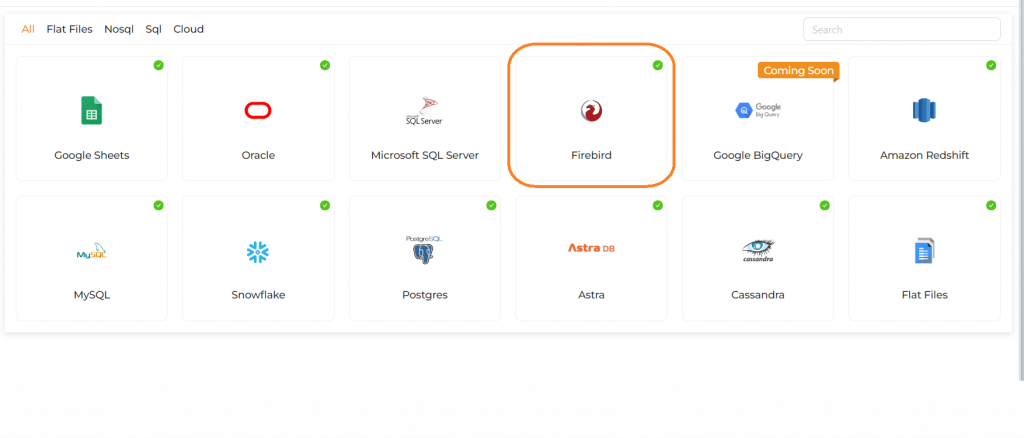
Step 2 : Connect to PostgreSQL (which acts as target)
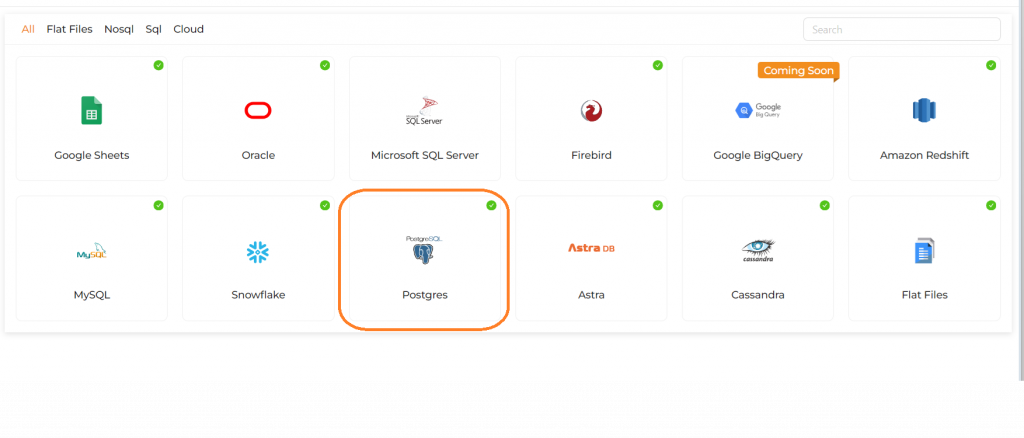
Step 3: Create a new job. Select your source (Firebird) and select which all tables you would like to migrate.
Step 4 (OPTIONAL): If you would like to do any other tasks like data type conversion, data cleaning, transformations, calculations those also you can instruct to do in natural English. NO knowledge of SQL or python or spark etc required.
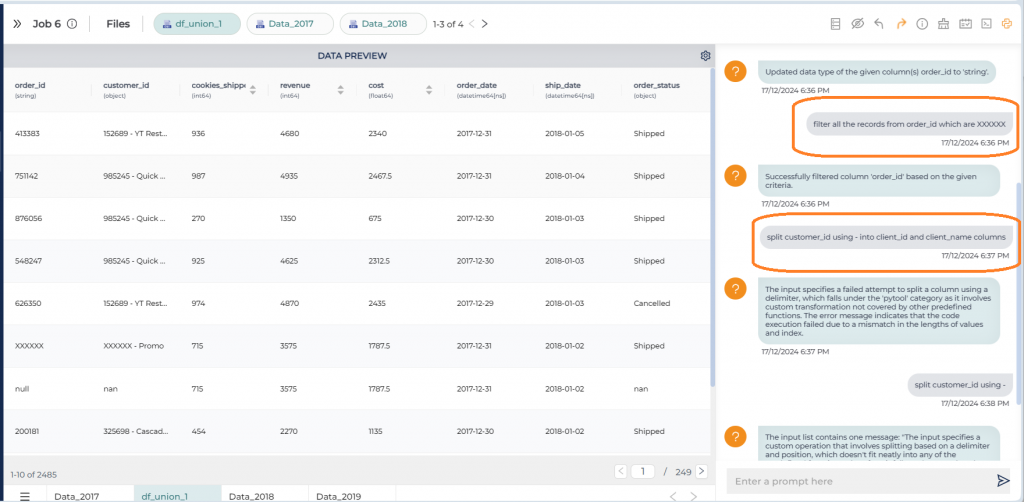
Step 5: Orchestrate/schedule this. While scheduling you can run it as one time load, or change data capture or truncate and load etc.
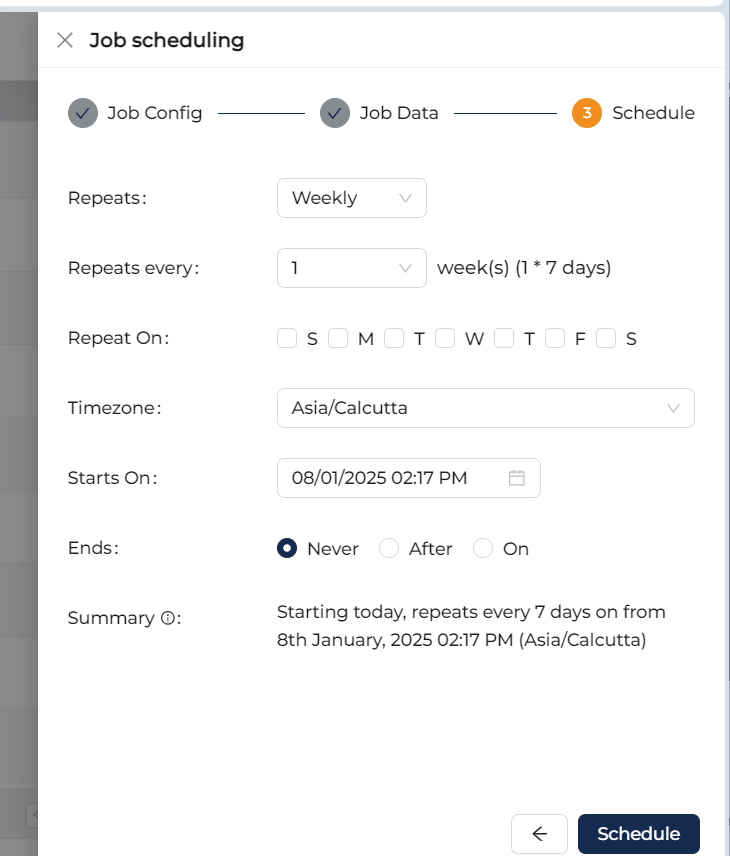
For more advanced users, Ask On Data is also providing options to write SQL, edit YAML, write PySpark code etc.
There are other functionalities like error logging, notifications, monitoring, logs etc which can provide more information like the amount of data transferred, logs, any error information if the job did not run and other kind of monitoring information etc.
Trying Ask On Data
You can reach out to us on mailto:support@askondata.com for a demo, POC, discussion and further pricing information. You can make use of our managed services or you can also download and install on your own servers our community edition from Github.
